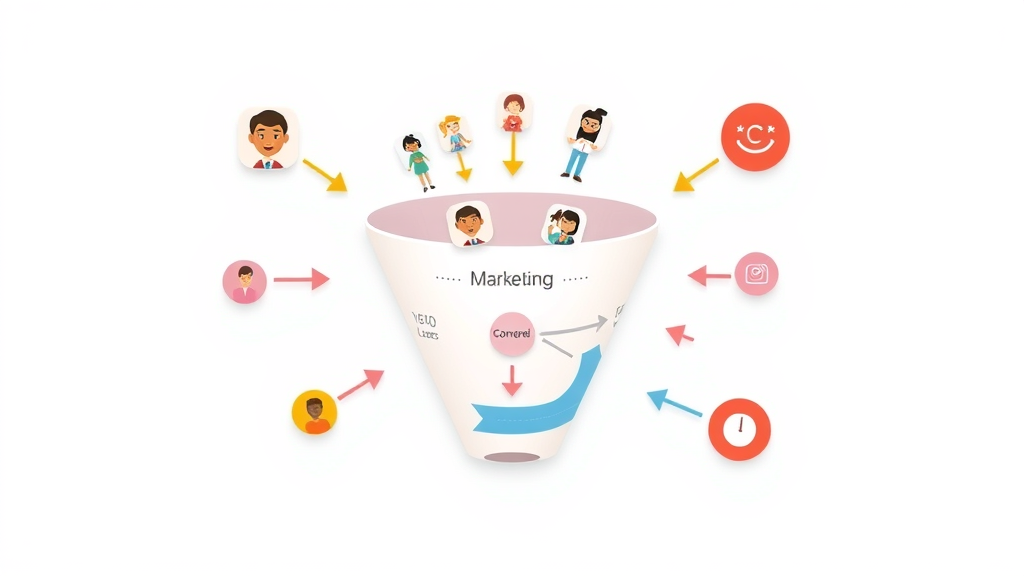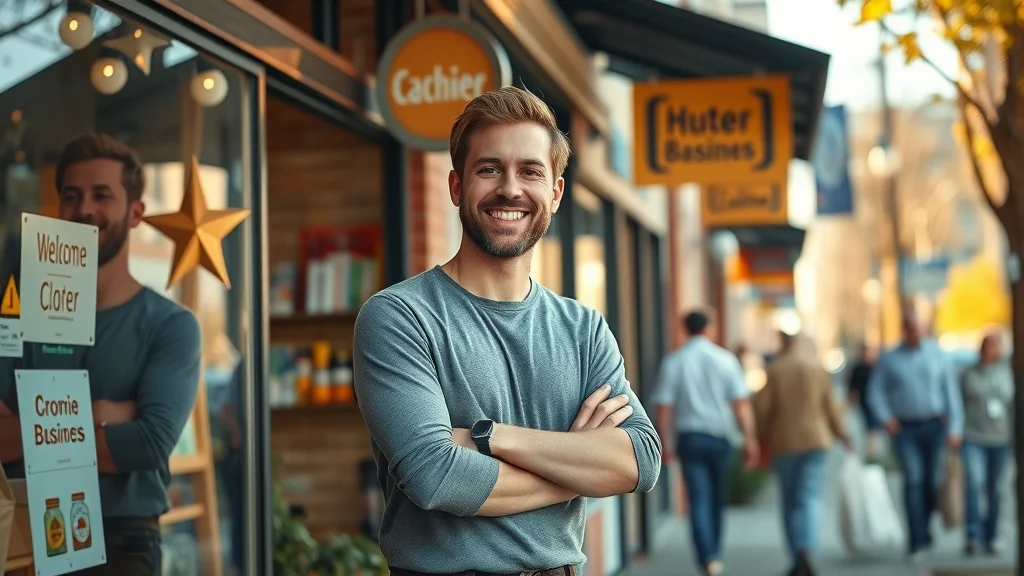Did you know that over 80% of marketers say their lead generation efforts directly drive revenue growth? If you want to transform your business—no matter its size—mastering lead generation is the key. This guide unpacks the proven strategies used by today’s top-performing businesses to skyrocket quality leads, shorten sales cycles, and dramatically improve conversion rates. Read on to learn how you can leverage these lead gen tactics for rapid and sustainable growth!
Unlocking Explosive Growth: Why Lead Generation is the Backbone of Modern Business Success
- ‘Did you know over 80% of marketers say their lead generation efforts drive revenue growth?’ Learn how mastering lead generation transforms businesses of any size.

What this guide will reveal about effective lead generation
- Fundamentals of lead generation
- The lead generation process explained
- Top strategies leveraging social media, landing pages, email marketing, and content marketing
- How to identify and attract quality leads
- Advanced lead gen tools, lead scoring, and nurturing tactics
Understanding Lead Generation: Definition, Process, and Importance
What do you mean by lead generation?
Lead generation is the process of attracting and capturing interest in your products or services from potential customers. It involves sparking awareness among your target audience and guiding them to take actions—like filling out a form or requesting a demo—that deliver their contact information to your sales team .
Effective lead gen forms the foundation of a healthy sales funnel, ensuring your sales teams always have qualified prospects to engage. Businesses that master the lead generation process experience consistent growth, higher conversion rates , and ultimately more paying customers. Without reliable lead generation, your marketing efforts risk missing out on reaching potential customers who are ready to buy.

The Lead Generation Process: From Awareness to Qualified Lead
The lead generation process starts by building awareness of your product or service with targeted campaigns. Then, you cultivate interest through valuable content marketing and relevant social media touchpoints. At the consideration stage, prospects interact with landing pages or tools that capture their contact info —moving them further down the sales funnel .
- Awareness: Engaging your target audience
- Interest: Providing value and relevant content
- Consideration: Utilizing generation tools to capture lead information
- Conversion: Qualifying and nurturing into paying customers
Finally, leads are nurtured and evaluated to determine if they’re a qualified lead , ready for the sales team . This systematic approach helps you efficiently generate leads , increasing your pool of quality prospects who are far more likely to convert.
Types of Lead Generation: Inbound vs. Outbound Pathways
Outbound lead gen strategies: Direct outreach for rapid results
Outbound lead generation focuses on proactively reaching out to potential customers . Classic tactics include cold calling prospects directly, sending targeted email lists , and leveraging paid advertising —like search engine or social media ads—to instantly capture interest. These methods can deliver quick results, making them attractive in high-velocity sales or when launching a new marketing campaign .
- Cold calling
- Email lists
- Paid advertising on search engines and social media
While outbound strategies excel at generating immediate responses, they often require more resources and can yield lower conversion rates unless paired with strong qualification criteria. For best outcomes, combine outbound efforts with robust lead scoring and nurture processes to ensure you target quality leads, not just quantity.

Inbound lead generation: Attracting the right audience organically
Inbound lead generation is all about drawing the right audience to your business through valuable, relevant content. This approach leverages SEO-driven content marketing , nurturing leads through informative blogs, videos, and downloadable resources, along with engaging social media campaigns.
- SEO-driven content marketing
- Social media engagement
- Optimized landing pages
- Email marketing campaigns
Inbound tactics position your brand as a helpful solution provider, building trust and authority with prospective customers over time. When supported by optimized landing pages and strategic email marketing , inbound campaigns deliver steadily growing streams of highly interested, qualified leads at lower costs.
"Inbound strategies generate up to 54% more leads at lower costs compared to traditional outbound tactics." – Industry Benchmark, 2023
Lead Generation Tools: Power Your Campaigns with Tech-Driven Solutions
Top lead generation tools for marketers
| Tool Name | Primary Function | Best For |
|---|---|---|
| HubSpot | CRM & lead gen automation | All businesses |
| LinkedIn Sales Navigator | Social outreach | B2B targeting |
| OptinMonster | Landing page optimization | Increasing email leads |
Integrating lead generation tools into your sales team’s workflow
The most successful marketing teams and sales teams use lead generation tools as part of a streamlined workflow. By connecting your CRM systems with lead scoring , you ensure data is automatically collected and appropriately prioritized. This integration enables marketers to identify and hand off qualified leads more efficiently.
- Use CRM systems to streamline data collection
- Employ lead scoring for better targeting
- Automate follow-ups and nurturing for increased conversions
Automation features let you trigger follow-up campaigns and tailor communication based on lead activity. With tools like HubSpot or LinkedIn Sales Navigator, your sales team can focus its energy on prospects most likely to convert, boosting overall lead quality and revenue.

Landing Page Optimization: Boosting Conversion Through High-Impact Design
Essential elements of a high-converting lead generation landing page
Your landing page acts as the gateway to capturing contact info from prospects. To maximize its lead gen potential, focus on compelling headlines using your main keywords, visible trust signals and testimonials , and user-friendly forms that collect essential data with minimal friction.
- Compelling headlines using main keywords
- Trust signals and testimonials
- Easy-to-complete forms
- Focused calls to action for lead gen
A single, clear call-to-action (CTA) increases the likelihood that visitors will submit their information. Always A/B test your CTAs, proof-points, and form length, since even minor tweaks can triple your conversion rates . Optimized pages guide users seamlessly from initial interest to delivering their contact information.

Case study: How a redesigned landing page tripled quality leads
Consider a B2B SaaS firm that struggled with low conversion rates. After revamping their landing page —including clearer headlines, concise benefits, added social proof, and an easier form—they saw a 3x uptick in quality leads within a month. The most significant changes were simplifying the form and showcasing customer testimonials prominently. Ongoing split testing optimized each element until the best version consistently converted visitors into qualified leads .
This real-world transformation highlights how laser-focused landing page optimization can directly impact your lead generation outcomes. Investing in great design, proof points, and credible testimonials is a proven way to drive more of the right leads to your sales team .
Maximizing Social Media for Lead Generation Success
Social media content marketing strategies to generate leads fast
Social media platforms are powerful tools for lead generation when paired with engaging content and interactive campaigns. To stand out, tailor every post to your target audience 's preferences and challenges—think insightful tips, behind-the-scenes videos, or exclusive offers.
- Tailor content to your target audience
- Use lead gen ads on Facebook, LinkedIn, Instagram
- Run contests and interactive campaigns
- Analyze and adjust based on platform performance
Paid lead gen ads, contests, and interactive polls on Facebook, LinkedIn, and Instagram can yield rapid results. Always track performance and adjust your strategy, leveraging each platform’s analytics to improve ROI, quality of leads, and prospect engagement for your marketing team .

Turning Cold Traffic into Quality Leads: Target Audience, Personas, and Segmentation
How to define your ideal target audience for effective lead generation
Identifying your target audience starts with demographic analysis (like age, location, profession) and extends to behavioral segmentation—mapping how visitors interact with your website or products. Combining this with psychographic insights and intent data allows you to pinpoint prospects most likely to become qualified leads .
- Demographic analysis
- Behavioral segmentation
- Psychographic and intent data utilization
Effective segmentation is at the heart of high-performing lead generation . By understanding who your best customers are, you can shape your content, offers, and outreach to resonate with the right people and dramatically improve your marketing ROI.

Segmentation examples for higher conversion rates
For B2B, segment leads by industry, company size, or specific challenges. With email, you can personalize content using behavioral triggers (website activity, email opens) to nurture prospects with messages that match where they are in the generation process .
- Segmenting by industry in B2B
- Personalizing email content using behavioral triggers
These segmentation strategies empower marketing teams and sales teams to focus on the highest potential prospects. As a result, your lead generation campaigns produce higher-quality leads who move more quickly through the sales funnel .
Content and Email Marketing: Nurturing Leads Until Purchase
Content marketing’s role in the lead generation process
Content marketing is the backbone of inbound lead gen . Educational blog posts, eBooks, webinars, and case studies provide real value to your audience, positioning your business as a solution provider they can trust.
- Educational blog posts, ebooks, webinars
- SEO: Appearing in search engines as a solution provider
- Value-driven content for nurturing and lead gen
By optimizing your content for search engines , you capture organic interest from prospects actively seeking solutions. Consistent, value-driven content establishes credibility and keeps your brand top-of-mind, nurturing leads along every stage of the customer journey.

Email marketing campaigns for qualified leads
Email marketing is a powerful tool for nurturing and qualifying leads as they progress through the generation process . Automated nurture sequences deliver targeted information based on a prospect’s actions—ensuring that the right message reaches the right person at the perfect time.
- Automated nurture sequences
- Drip campaigns matched to generation process stages
- Testing subject lines for higher open rates
Testing different subject lines, content formats, and sending times is proven to boost open rates and conversations. Drip campaigns guide leads down the funnel, building trust and moving prospects closer to becoming a paying customer.
Lead Scoring, Qualification, and Handover to Sales Team
Lead scoring: Prioritizing prospects for faster conversions
Lead scoring assigns values to prospects based on demographic fit, their engagement levels, and buying signals. This systematic approach empowers your sales team to focus its attention on high-potential leads who are most likely to convert into paying customers.
- Assigning values for demographic fit and engagement
- Using analytics to update scoring models
Data from generation tools and analytics platforms can be automatically fed into your CRM, updating scoring models in real time. This method ensures your lead handoff from marketing to sales happens at just the right moment, maximizing conversion rates and minimizing wasted effort.

Smooth transition from marketing to sales team
- Clear handoff protocols
- Consistent qualification criteria
- Sales team feedback loops
Efficiently passing qualified leads to the sales team requires well-defined handoff processes and shared qualification criteria. Consistent collaboration between marketing and sales ensures valuable feedback, so the lead generation strategy continuously improves and targets the right prospects.
Establishing feedback loops allows both teams to refine lead definitions, improve communication, and optimize the journey from prospect to paying customer .
Proven Marketing Strategies for Lead Generation Growth
Multi-channel tactics: Integrating search engine, social media, and traditional efforts
- Utilization of SEO for organic leads
- Retargeting ads to re-engage site visitors
- Diversified outreach increases both quantity and quality of leads
High-performing lead gen campaigns blend SEO, social media, email, and even traditional advertising for maximum reach. SEO and SEM bring organic and paid search engine traffic, while retargeting ads keep your brand in front of would-be potential customers who didn't convert the first time.
The more diversified and coordinated your marketing strategies , the more opportunities you have to identify and nurture quality leads —without depending on a single generation tool or channel.

Measuring, analyzing, and optimizing lead generation campaigns
- KPIs: Cost per lead, conversion rate, lead quality
- Using reporting from generation tools to refine approach
To maximize ROI, track critical KPIs including cost per lead, overall conversion rate , and lead quality. Generating weekly or monthly reports from your lead generation tools allows you to continually refine campaigns, allocate budget to top-performing channels, and double down on high-value content.
Data-driven optimizations powered by analytics translate directly into more qualified leads and higher revenue with every marketing campaign you launch.
Real-World Examples and Case Studies in Lead Generation
What is an example of lead generation?
A software company offers a “free trial” on their website landing page. Visitors interested in the product fill out a contact form with basic details like name, email, and company size. Upon submission, the details are automatically fed into the company’s CRM, and the sales team follows up, nurturing the prospect into a paying customer . This process—attracting interest, collecting contact information, then qualifying and nurturing the lead—is a textbook example of lead generation in action.
Noteworthy case studies demonstrating rapid lead gen growth
- A retail brand doubled leads via influencer campaigns.
- A consultancy used email marketing segmentation to boost conversions by 30%.
Businesses across industries are finding creative ways to amplify leads, such as through targeted influencer partnerships or data-driven segmentation in email marketing campaigns. These strategies not only drive quantity but consistently improve lead quality and sales velocity.
Step-by-Step: How to Generate Leads Efficiently
How do I generate leads?
To generate leads efficiently, follow these essential steps that blend strategy with automation:
- Research and define a clear target audience
- Optimize and test lead generation landing pages
- Launch content and email marketing
- Engage prospects through social media
- Employ lead generation tools to automate and streamline
- Score leads and nurture with strategic follow-ups
Consistently review these steps and refine each one. Focus on gathering actionable data, automating repetitive tasks, and creating great content that answers real customer needs to win more qualified leads faster.

Tips for building a sustainable generation process
- Continuous testing and improvement
- Sales and marketing team alignment
- Adopting the latest marketing strategies for lead gen
A long-term lead generation engine relies on regular A/B testing of messaging and landing pages, seamless collaboration between teams, and keeping your stack of generation tools and strategies up to date. This ensures resilience no matter how the market or audience preferences evolve.
Quality Leads vs. Quantity: Striking the Right Balance
The impact of lead quality on your bottom line
- How high-quality leads reduce costs and increase conversion rates
- Using generation tools to evaluate and enhance quality
Focusing on quality leads improves your conversion rates dramatically. By preventing wasted sales efforts on poorly matched prospects, your sales teams can devote resources to those most likely to become paying customers . Modern lead generation tools and analytics assist in assessing and improving lead quality on an ongoing basis.
Ultimately, it’s not about the number of leads you generate, but about attracting prospects with a defined fit, interest in your products or services , and a clear intent to purchase.
Quality leads: Characteristics and qualification
- Defined fit with your ICP
- Demonstrated need for your solution
- Clear intent to purchase
Qualified leads show direct alignment with your Ideal Customer Profile (ICP), engage actively with your marketing materials, and signal genuine purchasing intent. Consistent use of lead scoring helps your sales team zero in on these high-potential prospects and nurture them efficiently through to a sale.
Frequently Asked Lead Generation Questions
Is lead generation a hard job?
Lead generation can be challenging due to constant shifts in audience preferences, competition, and the landscape of marketing tools. However, with a smart mix of technology, clear processes, and collaboration between marketing and sales teams , it’s possible to turn these challenges into powerful opportunities. Persistence, innovation, and a data-driven approach make sustained success achievable for most businesses.

Common roadblocks in the lead gen process
- Unclear target audience
- Weak landing pages or calls to action
- Using outdated marketing strategies
- Poor lead quality due to lack of qualification
Most lead gen failures stem from missing clarity on who you serve, under-optimized landing pages, irrelevant messages, or outdated marketing techniques. Prioritizing data-driven segmentation, ongoing page testing, and always qualifying leads address these blockers head-on.
Expert Quotes on Lead Generation and Marketing Team Success
"The best lead generation combines human expertise with smart automation." – Marketing Strategist
"High-converting lead gen isn’t about the biggest list, but about nurturing the most engaged prospects to paying customers." – Sales Director
Resources, Templates, and Advanced Tips for Lead Generation Mastery
- Lead generation checklist
- Free landing page template
- Advanced analytics tools for qualifying leads faster
Recap and Fast-Action Checklist for Lead Generation Growth
- Understand and map your lead generation process
- Use the right tools for automation
- Build high-impact landing pages
- Produce quality content marketing
- Prioritize quality leads
- Engage the sales team for seamless handoff
- Analyze, iterate, and scale
Ready to Transform Your Business? Fast-Track Your Lead Generation Today
Take action now to ignite your pipeline, maximize ROI, and turn prospects into paying customers—master lead generation for unstoppable business growth!
Sources
- HubSpot – https://www.hubspot.com/lead-generation
- Salesforce – https://www.salesforce.com/blog/lead-generation/
- OptinMonster – https://www.optinmonster.com/lead-generation/
- Marketo – https://www.marketo.com/lead-generation/
To deepen your understanding of lead generation and enhance your strategies, consider exploring the following authoritative resources:
-
“Lead Generation Strategies for Business Growth” : This comprehensive guide by Mailchimp delves into various tactics, including content creation, digital marketing, and the use of lead generation tools, to effectively attract and convert potential customers. ( mailchimp.com )
-
“What is Lead Generation? The Guide to Building Buyer Journeys and Increasing Sales” : Outbrain’s article offers insights into key tools and technologies essential for successful lead generation, such as CRM systems, lead scoring, and analytics platforms, providing a roadmap to optimize your lead generation process. ( outbrain.com )
By leveraging these resources, you can implement proven strategies to boost your lead generation efforts and drive business growth.
 Add Row
Add Row  Add
Add 










Write A Comment